1. Step [4]: Hypothesis Organization
1.1. Differential Diagnoses
1.1.1. Priority
1.1.1.1. Diabetes Mellitus
1.1.1.2. Prostatic Hyperplasia
1.1.1.3. Obstructive Sleep Apnea
1.1.2. ADH Deficiency
1.1.2.1. Diabetes Insipidus
2. Step [5]: Learning Objectives
2.1. 1. To Learn diabetes mellitus type 2
2.1.1. Definition
2.1.2. Pathophysiology
2.1.3. Clinical Manifestation
2.1.4. Investigation
2.1.5. Complication
2.2. 2. To know the definition of diabetes inspidus
2.2.1. Etiology
2.2.2. Clinical manifestation
2.2.3. Investigation
2.2.4. Complication
2.3. 3. To know about prostatic hyperplasia
2.4. 4. To discuss obesity
3. Step [1]: Identifying Cues & Difficult Word
3.1. 48 years old male
3.2. sales managere
3.3. Overweight
3.4. Disturbed sleep
3.4.1. Worsen in the last 6 months
3.4.2. Heavy schedule
3.5. Nocturnal urination
3.5.1. Twice
3.6. SOB
3.7. Leg swelling
3.7.1. On long trips
4. Step [2]: Problem Formulation
4.1. 48 year old overweight male, sales manager complaining of tiredness, SOB, occasional leg swelling on long trips. During the last 6 months, he used to wake up at night to pass urine twice.
5. Step [3]: Hypotheses Generations
5.1. Diabetes
5.1.1. Due to insulin resistance
5.1.2. Symptoms
5.1.2.1. Nocturnal urination
5.1.2.2. Obesity
5.1.2.2.1. More levels of triglycerides
5.1.2.2.2. Impair signaling pathways of insulin
5.1.2.3. Cardinal Signs
5.1.3. Posterior pituitary
5.1.3.1. ADH
5.1.3.2. In the case of heart failure, edema bilateral
5.1.4. Obese
5.1.4.1. Sleep disturbance
5.1.4.2. Obstructive sleep apnea
5.1.4.2.1. Become Hypertensive
5.1.4.2.2. Left sided heart failure
5.1.4.2.3. Affect lung
5.1.4.2.4. Leg swqeling
5.1.4.2.5. Atherosclerotic changes
5.1.5. Others
5.1.5.1. Adipoectin
5.1.5.2. Leptokines
5.1.5.2.1. Increases
5.1.5.3. Beta cells funciton
5.1.5.3.1. overwhlemed by demands
5.1.6. Polyuria
5.1.6.1. Nocturia
5.1.6.1.1. Hyperplasia of prostate
5.1.6.1.2. UTI
5.1.6.1.3. Alcohol
5.1.6.2. ADH
5.1.6.2.1. Hyposecretion
5.1.6.2.2. Hypersecretion
5.1.6.2.3. Caused by
5.1.6.3. No enough information
5.1.7. Age & weight
5.1.7.1. Sedentary lifestyles
5.1.7.1.1. Decreased activity
5.1.7.1.2. DVT
5.1.7.2. Central obesity
5.1.7.3. Polyuria
5.1.8. Bilateral swelling
5.1.8.1. Heart or renal problem
5.1.9. SOB
5.1.9.1. Only on hurry
5.1.9.2. Could be in earlier stages
5.1.9.3. Urination
5.1.9.3.1. Metabolic or renal problem
5.1.9.4. All symptoms
5.1.9.5. Injury to coronary arteries
5.1.9.5.1. MI
5.1.9.6. Obesity
5.1.10. I|nsulin increase protein build up
